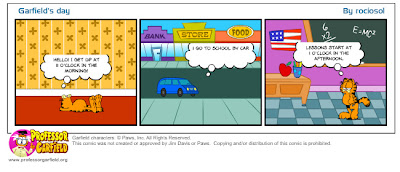Why using blogs with learners?
There are some obvious advantages to using blogs in the classroom. A blog can be defined as an ideal blended-learning approach since it is easy to set up and operate and can be an effective way to communicate, for instance, with learners outside lesson time. When applied to the classroom , a blog can be used by teachers and learners. The ideas and content can be generated and created by learners, either individually or collaboratively, since most blogs allow readers to comment on blog entries, including a blogroll or a list of links to other blogs which the blog writer admires.
Blogs can be categorize into : class blogs, edublogs, tutor blog and students blog according to who the writers or readers of it are.
The use of blogs provide a " real-world" tool for learners with which to practice their written English, establishing good practices of learner autonomy. Learners have to be proactive in accessing the information the teacher has posted to the blogs and following the links to online resources.
Using the comments features, learners can provide feedback on the blog entry. They can add their own ideas, thoughts, vocabulary, etc.
One of the issues to bear in mind when setting up student or class blogs is that of correction - how much help are learners given with their written work? A further area to consider is assessment. Blog postings can be used for evaluation. If the teacher intends to evaluate blog entries as part of a writing assessment, as with any written work the criteria for evaluation need to be made clear to learners in advance.
Sources:
Dudeney G. & Hockly N. (2008) How to teach English with technology. Person Education Limited.
Sharma P. & Barrett B. (2007) Blended Learning: Using technology in and beyond the language classroom. Oxford. Macmillan Education.
